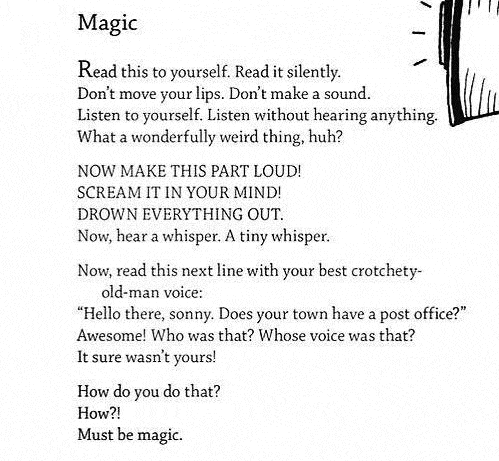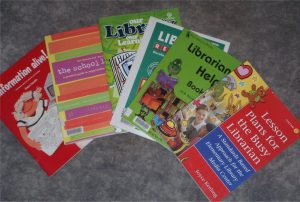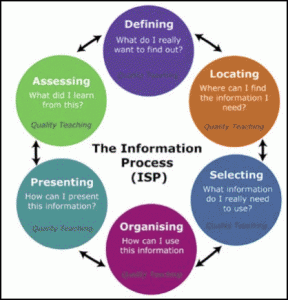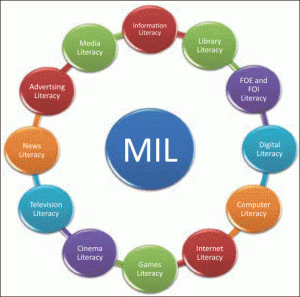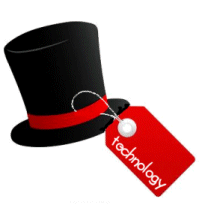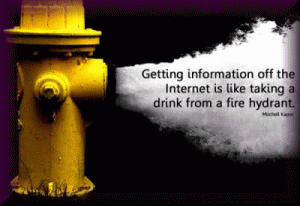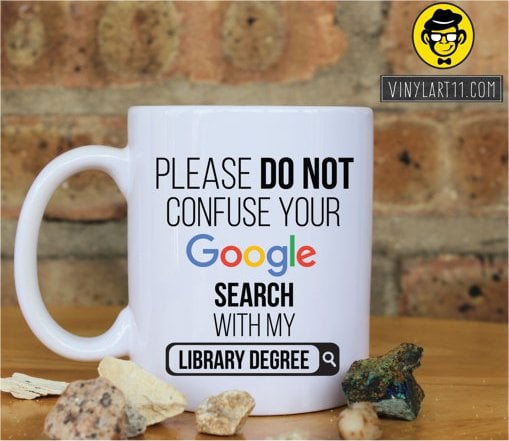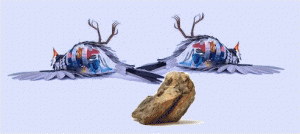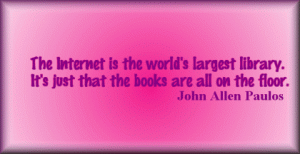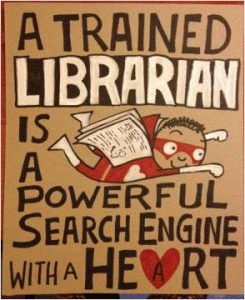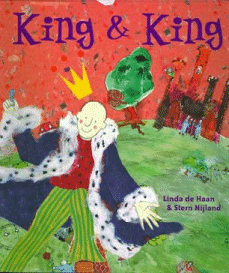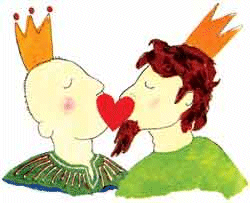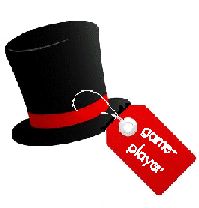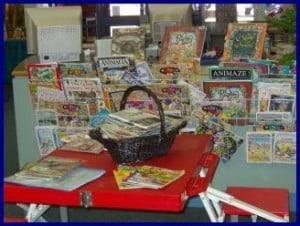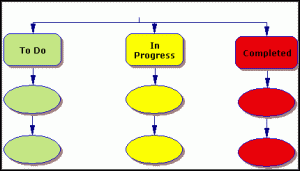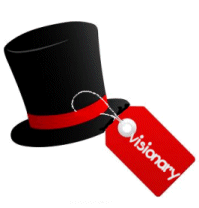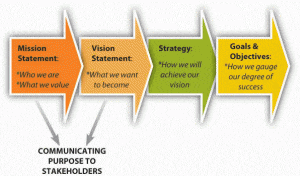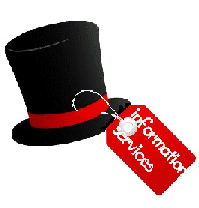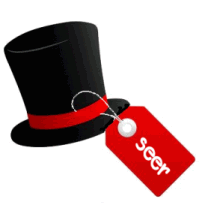
The Merriam-Webster dictionary defines a seer as one who “predicts events or developments” and while I can’t lay claim to having that extraordinary insight that sets such visionaries above the rest of us, in the past few weeks I have had the opportunity and privilege to see what might be in the world of libraries.
While no one can accurately predict the future, nevertheless there are those who examine what has been, what is and can make a very good forecast of what will be. They undertake the research, read the reports, study the trends and draw conclusions that the astute amongst us will consider and act on so that what we are offering remains relevant and required.
In a keynote address at the recent SLANZA conference in Christchurch, Mark Osborne identified three distinct phases in the evolution of education.
 Education 1.0 Education 1.0
This is the period prior to the Industrial Revolution when education was based on immediate, localised relationships. It was limited to those with whom one interacted within the village or farm. It was based on the master and apprentice model where the skills needed to function within the community were handed down from generation to generation.The library consisted of the knowledge and stories in the heads of the village elders which were passed on orally to younger members as they required it. |
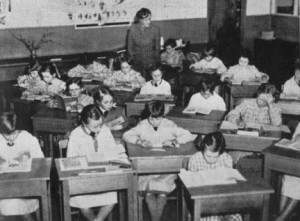 Education 2.0 Education 2.0
This period was predicated on the factory model where items (students) moved along a conveyor belt having pre-determined bits added to them as they progressed in a lock-step fashion until they reached the end where they were tested for quality control. Uniformity of appearance and outcome reigned. This one-size-fits-all model was seen as an efficient way to achieve a finished product and even the buildings which were single-cell classrooms off long corridors reinforced the notion. The teacher at the front of the classroom was the sage on the stage, students were passive “empty vessels to be filled” and learning was measured through written products which demonstrated the level of content and skills acquired. Curriculum was prescribed and delivered in a just-in-case fashion. Learning was confined to the boundaries of the school and the hidden curriculum of obedience, politeness, punctuality, neatness and respect for authority dominated. (Bowles & Gintis, 1976) The library was often a converted classroom, although later purpose-built structures emerged, and their main function was to be the storehouse of all the resources that staff and students needed. These were predominantly print and presided over by a person who was seen as the gatekeeper and who gave rise to the stereotypical image of a librarian today. |
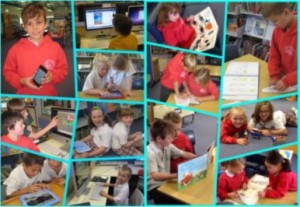 Education 3.0 Education 3.0
This phase of education has emerged particularly with the development of and access to technology as well as the research into how the brain functions and how humans learn. It is based on the belief that knowledge is a commodity, free to all rather than being the exclusive domain of the privileged few and that progress is based on not what you know but what you can do with what you know. Students are considered information creators as well as information consumers and so the teacher is now the guide on the side facilitating personal and collaborative knowledge creation based on the needs, abilities and interests of the individual. Learning is based on the notion that it takes a village to raise a child and thus is 365/24/7 with ubiquitous access to and use of technology to go beyond the walls of the school to wherever it leads.Students have a strong sense of ownership of their own education, are involved in the co-creation of both knowledge and resources and have active choice in their learning. While the library continues to be a storehouse of resources because not everything is available online and there is a growing body of research supporting the young learner’s need to build a solid foundation of traditional skills based on print if they are to be an effective and efficient user of the digital environment, the collection is much smaller and the space more flexible. It is geared to encouraging collaboration as students pose problems and seek solutions to them configuring the space to meet the needs of their activity. |
If we consider that a simple Google search today embraces all the technology that was employed in the Apollo program to land a man on the moon less than 50 years ago, and our students carry that power in their pockets but have done for only seven years since the release of the first smart phone, how can schools and their libraries change to meet the demands of Education 4.0 which is already on the horizon? The phrase “21st century skills” is bandied around in educational circles to the extent that it is now part of the lexicon of modern education. But what are those skills, what are they based on and what is their implication for the school library of the future and the teacher librarian who steers it?
Gratton (2011) has identified that the forces of technology, globalisation, society, energy resources, demography and longevity will be the major influences on work into the future and these are going to have a significant impact on the relevance of the current education system. The World Economic Forum has also identified 16 skills students need stating, “The gap between the skills people learn and the skills people need is becoming more obvious, as traditional learning falls short of equipping students with the knowledge they need to thrive”. Students need to be able to collaborate, communicate and solve problems and these are developed through social and emotional learning.

Skills required in the 21st century

How to teach all the skills
Other research from a variety of sources indicates that those jobs most likely to disappear to the efficiency of automation are those that are routine cognitive tasks and non-routine manual tasks while those that require human interaction and social intelligence or have a heuristic element that requires novel recombinations and interpretations of existing information to develop new ideas and artefacts are more resistant. Jobs that involve problem solving, teamwork, interpersonal skills rather than academic, and entrepreneurship will be the focus of the future while those that can be easily-structured into a rules-based process will disappear as computers follow rules very well. This is illustrated by computers being able to play chess at the masters level yet they cannot play a simple game of tic-tac-toe.

The New Work Order Report
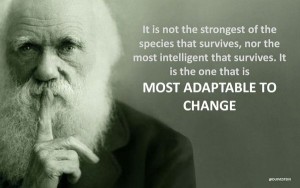
The workforce landscape that our current kindergarten students will face will be significantly different from that of our current school leavers. While there are many infographics offering guidance about the nature of what those “21st century skills” are, the common core comprises
- curiosity
- critical thinking
- creativity
- communication
- collaboration
- connectivity
- cross-cultural understanding
- confidence
- computer competence
- commitment
- citizenship
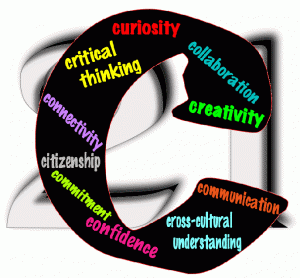
Much has also been written about how these concepts can and must be embedded in the design and delivery of the curriculum in the classroom, but how do they shape the school library, its position and potential?
At the SLJ Leadership Summit we have been urged to “teach more and librarian less” and certainly that makes sense if we take on board the evidence that those tasks which are routine, manually-based and do not involve critical human intervention are more likely to be outsourced or automated. Why should a principal pay a teaching salary for a job a volunteer can do? But what does this look like in a practical sense? Perhaps it is worthwhile to return to those three key roles of the teacher librarian – curriculum leader, information services manager and information specialist – and examine what they might entail in the immediate future.
curriculum leader
Because the teacher librarian is still likely to be the person within the school with the broadest view of the curriculum as a whole, the role of curriculum leader remains essential, even moreso when we consider how far its boundaries now reach. The core concepts of 21st century pedagogy are also the core of our teaching skillset.
If the child’s innate curiosity is to be fostered so they can ask and answer their own questions then an inquiry-based approach which builds on what they already know and what they want to find out is essential. Sitting comfortably within that approach as a scaffold is the information literacy process, a cross-curriculum perspective that encourages critical and creative thinking, the melding of what is known with what is learned to develop new perspectives and the communication of these new ideas with confidence through a variety of channels. Its foundation question of “What do I want to know?” encourages problem solving and solution seeking either by the individual or a group.
However, we can’t lead every inquiry and investigation so our role has to shift from teaching the students to also teaching the teachers so that the language and practice of inquiry-based learning and information literacy are embedded into all curriculum design and delivery. It is much easier to have a long-term impact on 30 teachers than 900 students. Rather than being just the teacher of “library skills”, an extension of the English department or value-adding to what is done within the classroom, we have a specialist teaching role in the development of the reading and research skills, digital citizenship and communications that are at the heart of learning. At the SLJ Leadership Summit, panellist Tara Jones said she was now her school’s ‘research technology specialist’ as she “collaborates with classroom teachers and co-teaches lessons in the classroom” and is “responsible for embedding technology and research skills within problem-based learning experiences”. Sounds very much what many Australian TLs do already, although the emphasis is on co-teaching rather than just collaborating!
As well as the visible direct instructor’s role that we assume, we must also lead a less visible, more subtle but equally important thrust. We need to create opportunities that encourage children to question, to explore, to investigate, to collaborate, to persevere, to mentor, to explain, to listen, to discuss, to debate, to decide, to be confident, to have a can-do attitude, to manage their time, to take risks, to cope with pressure, failure and adversity, to be flexible, to be resilient, to be committed, to take responsibility, to be independent- in short, to develop those attributes and interpersonal skills that are going to be the key to their futures. We can do this by
- developing displays that lead them to new worlds to discover
- creating challenges which encourage them to solve problems
- allowing them to wonder and experiment, to follow along paths and down rabbit holes
- letting them lead their own learning
- using a variety of groupings that take them out of their immediate friendship circle
- allowing them a leadership role in the management and running of the library
- challenging existing ideas by playing devil’s advocate
- asking questions and setting tasks that are open-ended so there can be a variety of solutions
- encouraging them to pursue a passion and then enabling them to share it with a live audience
- encouraging them to teach and mentor each other as well as us
- flipping the curriculum by using online tools to support 365/24/7 learning
- creating an online classroom that can be a “ready reference” for students such as The Library Minute
- providing the ‘river’ but not necessarily the ‘bridge’ which says “cross here”
- providing flexible spaces for learning that can be arranged and changed to meet the needs of the users and the task including
- 1:many for direct instruction
- co-teaching
- peer tutoring so small groups can work together
- informal places for relaxation, play and experimentation
- private spaces where personal learning choices and means can be explored
- collaborative opportunities
- outdoor learning
- reflection
- providing opportunities for learning to be shared through social networking apps
Similarly, we can be a less-visible support for our teaching colleagues as we share relevant research with them; alert them to opportunities for professional learning; suggest new reads and new resources that fit what they are doing in class right now; go the extra mile to track down that elusive key resource…
With no more powerful advocates for the school library than the parents of its students, we must also be reaching and teaching them, inviting them to be active participants in their child’s learning as the boundaries between home and school, teaching and learning blur and merge into a seamless whole. By reaching out through parent participation programs and social media we can inform parents of what is happening and why as well as forming long-lasting partnerships that can only enhance what the library offers.
And while we are focused on teaching others, we must not forget to keep teaching ourselves through our professional networks, professional reading and action research. We must know that what we do is based on current best-practice and be able to defend and demonstrate this through reference to theory, research and evidence. We need to be the window to the future, not the mirror of the past.
It is the teaching role that we assume in the school that will be the purple cow that Seth Godin encourages us to find -that one remarkable thing that makes us stand out from the herd.

information services manager
While some might argue that the provision of resources could be easily outsourced, it is the curriculum leader’s hat that makes that of the information services manager fit more snugly. The responsibility to “develop and implement strategies for evaluating the collection and for determining curriculum and student needs within the context of identified school priorities” is just as critical now as it ever was particularly with the plethora of resources in so many formats available.
The collection, regardless of its format, must still meet the needs. interests and abilities of its users. It still needs to be regularly evaluated and assessed, added to or subtracted from as necessary. But it now needs to support information creation as well as information consumption and be available 365/24/7 as learning is no longer confined by walls and clocks. Collection Development policies need to be updated to reflect the needs of now and the next three years so that decisions are informed by evidence.
In the past couple of weeks I have personally been contacted by three teacher librarians who have been directed to dispose of their non fiction collections by principals who believe that such collections no longer have a place and that the space could be put to better use. The belief that “everything is available on the internet” is alive and well in the minds of many. As the information services manager we have a responsibility to dispel this myth that everything, everywhere has been digitised and that what is available is authoritative, accurate, current, objective, relevant and intellectually accessible to our students. We need to ensure that the Powers That Be are kept abreast of the research that shows that if students are to be effective and efficient users of digital content they need a foundation of traditional skills built on print; that not everything is available online, not even behind subscriber-based firewalls; that what is online does not necessairly meet the needs of students, particularly younger ones; and that we must acknowledge the different learning styles, needs and preferences of our clients and cater for these.
Collection development should not be an either/or decision.
information specialist
The library may no longer be the vast book repository it once was but the need for an information specialist – the provider of “access to information resources through efficient and well-guided systems for organising, retrieving and circulating resources”- can be summed up in these three memes which regularly do the rounds of social networking media.
Providing easy access to appropriate and relevant information is more important now than ever before as the library’s walls are breached and the amount of information grows exponentially each year. Even with tools like Google Advanced Search, students can still spend whole sessions searching for the perfect online resource and then be totally overwhelmed by the choices available.
Where once a working knowledge of the Dewey system and the arrangement of the library was sufficient, today and tomorrow a whole new set of skills are needed. Students expect to be able to access what they want, where they want and from whatever device they are using at the time. So the curation of resources using tools like LibGuides, Only2Clicks, ScoopIt Pinterest and Pearltrees and the selection and promotion of databases are essential.
We need to teach both staff and students how to use Wikipedia and Google efficiently because we know these are the go-to tools when an information need becomes apparent, and, at the same time, we need to teach them to be mindful of their digital footprint and protecting their privacy. The ethical use of ideas, information and images is also critical in this copy-and-paste society adding yet another layer of complexity to the role.
And because information management is about creation as well as consumption we must also know the right app for the job so we also have to have things like the padogogy wheel and Bloom’s Digital Taxonomy on hand. If anything, the need for an information specialist who knows pedagogy, the curriculum, how teachers teach and students learn is more important than ever.
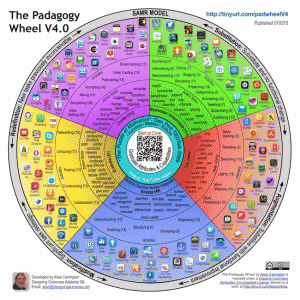 The Padagogy Wheel by Allan Carrington is licensed under a Creative Commons Attribution 3.0 Unported License. Based on a work at http://tinyurl.com/bloomsblog. |
 |
the learning space
Key to the library meeting the needs of today’s and tomorrow’s students is the ability for the space itself to be able to adapt to particular needs at a particular time. While it will still have a storehouse role as well as that of being a sanctuary, they need to become “awesome incubators” (Osborne) and a ‘temporary autonomous zone’ where users can create the type of space that fits their needs at the time. The physical space needs to reflect the rapidly changing nature of the intellectual architecture so they add to what is happening within and beyond the school. Users need to be able to create the space they need for the activity they are going to do. So as well as mobile technology and moveable furniture they need to have areas that cater for noisy and quiet activities, individual, and collaborative work, formal and informal instruction, vertical and horizontal groupings, showcase and feedback… While there is currently a focus on the library as a makerspace this needs to be interpreted as the creation of new ideas and information as well as objects. But most critically, because of our innate need for contact with others of our species, we must teach our students to thrive in the digital world and survive in an analog one.
An internet search for ‘library makeover’ will yield many stories and images that can be adapted but Extreme Makeover tracks the changes in the library of the North Carolina School of Science and Mathematics and includes planning and pitfalls and lots of other tips. Diana Rendina identifies six active learning spaces your library should have if it is to meet the needs of its users. Much of this post hs been inspired by the keynote address by Mark Osborne at From the Ground Up, SLANZA 2015 and there is more of his writing in Collected and the basis for his assertions in an Ed-Talk video. For me, anyone who starts with the premise that “the first step to considering modern learning environments is to start with learning” is on solid ground.
Contrary to a common belief that libraries will be obsolete by 2025, this glimpse into what can be demonstrates that their place in society is secure. As the school becomes the centre of the child’s global village, so the library must become the village green -a service centre offering opportunities to teach and learn; the buffer between home and work where schools and their communities can come together; a blended space where tradition meets the future.
“A library outranks any other one thing a community can do to benefit its people. It is a never failing spring in the desert.”
Andrew Carnegie
Pushing Beyond Future-Ready: Creating a Bold Context for K-12 Libraries
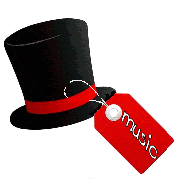 Sadly, many of our colleagues in less-enlightened schools are asked to take responsibility for teaching a particular strand of the curriculum during their time with students, often in that time when they are covering teacher preparation and planning time. And while that can be a way to embed the information literacy skills that are an integral aspect of each strand of the Australian Curriculum, often the teaching and learning becomes a content-building exercise and tends to be limited to subjects like Science, Geography, History or Humanities and Social Sciences, or in some cases covers the broader elements of the General Capabilities and Cross-Curriculum Priorities and those Key Learning Areas become the stand that the hat is pinned on.
Sadly, many of our colleagues in less-enlightened schools are asked to take responsibility for teaching a particular strand of the curriculum during their time with students, often in that time when they are covering teacher preparation and planning time. And while that can be a way to embed the information literacy skills that are an integral aspect of each strand of the Australian Curriculum, often the teaching and learning becomes a content-building exercise and tends to be limited to subjects like Science, Geography, History or Humanities and Social Sciences, or in some cases covers the broader elements of the General Capabilities and Cross-Curriculum Priorities and those Key Learning Areas become the stand that the hat is pinned on.